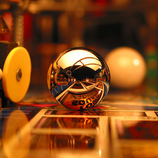We found 1152 results that contain "venturit"
Posted on: #iteachmsu


Why are my cholesterol numbers important? AdditionLLY Added https://iteachmsu.venturit.org/
https://iteachmsu.venturit.org/ Your cholesterol numbers are important because they help you know your risk for heart disease. Cholesterol is a type of lipid (fat) that helps your body perform many important functions. But too much cholesterol in your blood is bad for you. It can enter your artery wall, damage its integrity and lead to the formation of atherosclerotic plaque (hardened deposits).
This process of plaque buildup is called atherosclerosis. It can lead to serious problems like:
Coronary artery disease: Blocked blood flow to your heart.
Peripheral artery disease: Blocked blood flow to your legs and arms.
Carotid artery disease: Blocked blood flow to your brain.
Cholesterol travels through your blood silently. And it turns into plaque silently. Plaque buildup is like someone tip-toeing on carpet. You might not see or notice its presence for a long time. You may have no symptoms until you have a heart attack or stroke. At that point, the plaque is like high heels on a hardwood floor. And it’s already caused serious damage to your body.
You can live for many years with high cholesterol and not even know it. That’s why it’s essential to get your cholesterol numbers checked on a regular basis. If your cholesterol numbers are too high (hyperlipidemia), that’s a red flag for you and your healthcare provider. High cholesterol is a major risk factor for heart disease. But catching it early gives you a chance to make changes and get your cholesterol to a healthy level.
This process of plaque buildup is called atherosclerosis. It can lead to serious problems like:
Coronary artery disease: Blocked blood flow to your heart.
Peripheral artery disease: Blocked blood flow to your legs and arms.
Carotid artery disease: Blocked blood flow to your brain.
Cholesterol travels through your blood silently. And it turns into plaque silently. Plaque buildup is like someone tip-toeing on carpet. You might not see or notice its presence for a long time. You may have no symptoms until you have a heart attack or stroke. At that point, the plaque is like high heels on a hardwood floor. And it’s already caused serious damage to your body.
You can live for many years with high cholesterol and not even know it. That’s why it’s essential to get your cholesterol numbers checked on a regular basis. If your cholesterol numbers are too high (hyperlipidemia), that’s a red flag for you and your healthcare provider. High cholesterol is a major risk factor for heart disease. But catching it early gives you a chance to make changes and get your cholesterol to a healthy level.
NAVIGATING CONTEXT
Posted on: #iteachmsu


What Is the Real Impact of Social Media?
Information and communication technology has changed rapidly over the past 20 years with a key development being the emergence of social media.
The pace of change is accelerating. For example, the development of mobile technology has played an important role in shaping the impact of social media. Across the globe, mobile devices dominate in terms of total minutes spent online. This puts the means to connect anywhere, at any time on any device in everyone’s hands.
The pace of change is accelerating. For example, the development of mobile technology has played an important role in shaping the impact of social media. Across the globe, mobile devices dominate in terms of total minutes spent online. This puts the means to connect anywhere, at any time on any device in everyone’s hands.
Assessing Learning
Posted on: #iteachmsu


Incorporating Technologies in the Science Classroom
This playlist is about helping instructors use technology in their classrooms.
Posted on: #iteachmsu

Creation Galexy..
Creation of the world
Authored by: Benote
Assessing Learning
Posted on: #iteachmsu

Hemoglobin and Hematocrit
Hemoglobin (Hb) is the protein contained in red blood cells that is responsible for delivery of oxygen to the tissues. To ensure adequate tissue oxygenation, a sufficient hemoglobin level must be maintained. The amount of hemoglobin in whole blood is expressed in grams per deciliter (g/dl). The normal Hb level for males is 14 to 18 g/dl; that for females is 12 to 16 g/dl. When the hemoglobin level is low, the patient has anemia. An erythrocytosis is the consequence of too many red cells; this results in hemoglobin levels above normal.
The hematocrit measures the volume of red blood cells compared to the total blood volume (red blood cells and plasma). The normal hematocrit for men is 40 to 54%; for women it is 36 to 48%. This value can be determined directly by microhematocrit centrifugation or calculated indirectly. Automated cell counters calculate the hematocrit by multiplying the red cell number (in millions/mm3) by the mean cell volume (MCV, in femtoliters). When so assayed, it is subject to the vagaries inherent in obtaining an accurate measurement of the MCV (see Chapter 152).
Both the hemoglobin and the hematocrit are based on whole blood and are therefore dependent on plasma volume. If a patient is severely dehydrated, the hemoglobin and hematocrit will appear higher than if the patient were normovolemic; if the patient is fluid overloaded, they will be lower than their actual level. To assess true red cell mass, independent radionuclide evaluation of the red cells and plasma (by 51Cr and 131I respectively) must be performed.
Go to:
Technique
Hematocrit
If the hematocrit must be determined quickly, as is often the case when a patient hemorrhages, it may be necessary to measure the hematocrit directly without the use of an automated counter. The materials needed are:
Lancets
Alcohol prep pads
Gauze pads
Microhematocrit tubes (heparinized)
Sealant ("Seal-Ease," "Crit-Seal," etc)
Microhematocrit centrifuge
Microhematocrit reader
If venipuncture is required: tourniquet, syringe, tube containing anticoagulant (EDTA, citrate)
For hematocrits obtained by fingerstick, wipe the fingertip pad of the fourth finger of the nondominant hand with the alcohol prep pad. Make certain the area is allowed to dry. Prick the fingertip with the lancet. Place the hematocrit tube near the incision site and allow the blood to flow via capillary action into the hematocrit tube until it is two-thirds to three-fourths full or to a predesignated mark on the tube. Avoid "milking" the finger if possible; this causes the expression of tissue fluids and may result in a falsely low hematocrit. Always fill at least three tubes. For hematocrits obtained by venipuncture, draw a sample of blood into the tube containing anticoagulant and mix well. Dip the hematocrit tube into the blood and allow the blood to rise to the desired two-thirds to three-quarters level. Because blood cells naturally sediment, a prior thorough mixing of the blood in the tube is necessary to ensure accurate reading.
After cleaning the outside of the hematocrit tubes of excess blood, invert the tube slowly so that the blood migrates just short of the bottom end of the tube. Seal the bottom of the tube with sealant. Make certain that little or no air is interspersed in the column of blood. If the seal is incomplete, leakage will occur during centrifugation and false readings will be obtained.
Place the tubes in a microhematocrit centrifuge and spin for 3 to 5 minutes at high speed. A shorter spin will not allow for complete sedimentation.
Using either a hematocrit reader or any ruled apparatus, measure the length of the column of the packed red cells and divide it by the length of the whole column of blood (cells and plasma), as in Figure 151.1. To obtain the hematocrit, multiply this number by 100%. Average all readings obtained from the different microhematocrit tubes.
Figure 151.1
Microhematocrit tube after sedimentation. The hematocrit is a ratio of the packed cells to total volume.
Example: If the column of packed red cells measures 20 mm and the whole blood column measures 50 mm, the hematocrit is 20/50 = 0.4 or (0.4 × 100%) = 40%.
Hemoglobin
Hemoglobin determinations will usually be performed by an automated cell counter from a tube of well-mixed EDTA-anticoagulated blood filled to a predetermined level. In this assay, all forms of hemoglobins are converted to the colored protein cyanomethemoglobin and measured by a colorimeter. An inadequate sample, whether due to insufficient volume or inadequate anticoagulation, may give false readings. If it is necessary to determine the level of anemia quickly, the hematocrit is an easier, more convenient test.
Hemoglobin Electrophoresis
Hemoglobin electrophoresis measures the mobility of hemoglobin in an electric field; it can therefore detect only those abnormalities in hemoglobin that alter the charge. Electrophoretic mobilities are affected by pH and by the medium in which the test is conducted. Screening tests typically use a hemolysate of anticoagulated blood electrophoresed on cellulose acetate at pH 8.6 to 8.8. If necessary, a further electrophoresis in starch gel at pH 6.2 to 6.8 is performed. At that stage, the work will usually be performed by a specialized laboratory.
Hemoglobin electrophoresis will not readily assess situations where there are neutral amino acid substitutions or where the hemoglobin is normal but the constituent chains are not produced in equal numbers (thalassemias). The diagnosis of alpha thalassemia of a mild to moderate degree cannot be made by hemoglobin electrophoresis; the diagnosis of beta thalassemia may be made by inference from an increase in the Hb A2.
A standard electrophoresis would look like Figure 151.2.
Figure 151.2
A standard hemoglobin electrophoresis (cellulose acetate, pH 8.6).
Go to:
Basic Science
The molecular weight of hemoglobin is approximately 64,500 daltons. Hb is composed of two pairs of dissimilar chains, α and β, each defined by a specific amino acid sequence and incorporating an iron-containing heme group. Two α–β dimers combine to form a hemoglobin tetramer. This allows for the "heme–heme" interaction necessary for effective oxygen uptake (deoxyhemoglobin → oxyhemoglobin) and delivery (oxyhemoglobin → deoxyhemoglobin). The oxygen affinity of hemoglobin is a function of this heme–heme interaction and of pH (Bohr effect), and is a measure of how many hemoglobin molecules have oxygen bound to them for a given level of oxygen tension. In a normal individual the major hemoglobin is Hb A, constituting approximately 97% of the total hemoglobin. Variations and/or amino acid substitutions in these chains exist. Some are deleterious to the normal function of hemoglobin, whereas others may have relatively normal oxygen affinity and stability. Hemoglobins containing different types of chains make up the remainder of the hemoglobin content in red cells (α2δ2 = Hb A2 approximately 2%; α2γ2 = Hb F approximately 1%).
Substitutions in the normal hemoglobin amino acid sequence may result in hemoglobins that have different sub-unit interactions and varying affinities for oxygen. For example, a substitution of the sixth amino acid on the beta chain causes Hb S, or sickle hemoglobin. Hb S has a lower oxygen affinity and surrenders its oxygen more readily. Hb F, a normal minor hemoglobin constituent, has a higher oxygen affinity.
If the oxygen dissociation curve is abnormal, the body will adjust the hemoglobin level to ensure adequate oxygen distribution to the tissues. Thus in a rare disease like hemoglobin Hotel Dieu, the difficulty in extracting oxygen from a variant hemoglobin with increased oxygen affinity could result in a lack of oxygen for the tissues (tissue hypoxia) and a compensatory erythrocytosis. The smaller fraction of oxygen released from the hemoglobin is thereby offset by the increased number of hemoglobin molecules. Similarly, in sickle cell anemia, the decreased oxygen affinity allows these patients more tissue oxygen at any given hemoglobin level.Testing.
The hematocrit measures the volume of red blood cells compared to the total blood volume (red blood cells and plasma). The normal hematocrit for men is 40 to 54%; for women it is 36 to 48%. This value can be determined directly by microhematocrit centrifugation or calculated indirectly. Automated cell counters calculate the hematocrit by multiplying the red cell number (in millions/mm3) by the mean cell volume (MCV, in femtoliters). When so assayed, it is subject to the vagaries inherent in obtaining an accurate measurement of the MCV (see Chapter 152).
Both the hemoglobin and the hematocrit are based on whole blood and are therefore dependent on plasma volume. If a patient is severely dehydrated, the hemoglobin and hematocrit will appear higher than if the patient were normovolemic; if the patient is fluid overloaded, they will be lower than their actual level. To assess true red cell mass, independent radionuclide evaluation of the red cells and plasma (by 51Cr and 131I respectively) must be performed.
Go to:
Technique
Hematocrit
If the hematocrit must be determined quickly, as is often the case when a patient hemorrhages, it may be necessary to measure the hematocrit directly without the use of an automated counter. The materials needed are:
Lancets
Alcohol prep pads
Gauze pads
Microhematocrit tubes (heparinized)
Sealant ("Seal-Ease," "Crit-Seal," etc)
Microhematocrit centrifuge
Microhematocrit reader
If venipuncture is required: tourniquet, syringe, tube containing anticoagulant (EDTA, citrate)
For hematocrits obtained by fingerstick, wipe the fingertip pad of the fourth finger of the nondominant hand with the alcohol prep pad. Make certain the area is allowed to dry. Prick the fingertip with the lancet. Place the hematocrit tube near the incision site and allow the blood to flow via capillary action into the hematocrit tube until it is two-thirds to three-fourths full or to a predesignated mark on the tube. Avoid "milking" the finger if possible; this causes the expression of tissue fluids and may result in a falsely low hematocrit. Always fill at least three tubes. For hematocrits obtained by venipuncture, draw a sample of blood into the tube containing anticoagulant and mix well. Dip the hematocrit tube into the blood and allow the blood to rise to the desired two-thirds to three-quarters level. Because blood cells naturally sediment, a prior thorough mixing of the blood in the tube is necessary to ensure accurate reading.
After cleaning the outside of the hematocrit tubes of excess blood, invert the tube slowly so that the blood migrates just short of the bottom end of the tube. Seal the bottom of the tube with sealant. Make certain that little or no air is interspersed in the column of blood. If the seal is incomplete, leakage will occur during centrifugation and false readings will be obtained.
Place the tubes in a microhematocrit centrifuge and spin for 3 to 5 minutes at high speed. A shorter spin will not allow for complete sedimentation.
Using either a hematocrit reader or any ruled apparatus, measure the length of the column of the packed red cells and divide it by the length of the whole column of blood (cells and plasma), as in Figure 151.1. To obtain the hematocrit, multiply this number by 100%. Average all readings obtained from the different microhematocrit tubes.
Figure 151.1
Microhematocrit tube after sedimentation. The hematocrit is a ratio of the packed cells to total volume.
Example: If the column of packed red cells measures 20 mm and the whole blood column measures 50 mm, the hematocrit is 20/50 = 0.4 or (0.4 × 100%) = 40%.
Hemoglobin
Hemoglobin determinations will usually be performed by an automated cell counter from a tube of well-mixed EDTA-anticoagulated blood filled to a predetermined level. In this assay, all forms of hemoglobins are converted to the colored protein cyanomethemoglobin and measured by a colorimeter. An inadequate sample, whether due to insufficient volume or inadequate anticoagulation, may give false readings. If it is necessary to determine the level of anemia quickly, the hematocrit is an easier, more convenient test.
Hemoglobin Electrophoresis
Hemoglobin electrophoresis measures the mobility of hemoglobin in an electric field; it can therefore detect only those abnormalities in hemoglobin that alter the charge. Electrophoretic mobilities are affected by pH and by the medium in which the test is conducted. Screening tests typically use a hemolysate of anticoagulated blood electrophoresed on cellulose acetate at pH 8.6 to 8.8. If necessary, a further electrophoresis in starch gel at pH 6.2 to 6.8 is performed. At that stage, the work will usually be performed by a specialized laboratory.
Hemoglobin electrophoresis will not readily assess situations where there are neutral amino acid substitutions or where the hemoglobin is normal but the constituent chains are not produced in equal numbers (thalassemias). The diagnosis of alpha thalassemia of a mild to moderate degree cannot be made by hemoglobin electrophoresis; the diagnosis of beta thalassemia may be made by inference from an increase in the Hb A2.
A standard electrophoresis would look like Figure 151.2.
Figure 151.2
A standard hemoglobin electrophoresis (cellulose acetate, pH 8.6).
Go to:
Basic Science
The molecular weight of hemoglobin is approximately 64,500 daltons. Hb is composed of two pairs of dissimilar chains, α and β, each defined by a specific amino acid sequence and incorporating an iron-containing heme group. Two α–β dimers combine to form a hemoglobin tetramer. This allows for the "heme–heme" interaction necessary for effective oxygen uptake (deoxyhemoglobin → oxyhemoglobin) and delivery (oxyhemoglobin → deoxyhemoglobin). The oxygen affinity of hemoglobin is a function of this heme–heme interaction and of pH (Bohr effect), and is a measure of how many hemoglobin molecules have oxygen bound to them for a given level of oxygen tension. In a normal individual the major hemoglobin is Hb A, constituting approximately 97% of the total hemoglobin. Variations and/or amino acid substitutions in these chains exist. Some are deleterious to the normal function of hemoglobin, whereas others may have relatively normal oxygen affinity and stability. Hemoglobins containing different types of chains make up the remainder of the hemoglobin content in red cells (α2δ2 = Hb A2 approximately 2%; α2γ2 = Hb F approximately 1%).
Substitutions in the normal hemoglobin amino acid sequence may result in hemoglobins that have different sub-unit interactions and varying affinities for oxygen. For example, a substitution of the sixth amino acid on the beta chain causes Hb S, or sickle hemoglobin. Hb S has a lower oxygen affinity and surrenders its oxygen more readily. Hb F, a normal minor hemoglobin constituent, has a higher oxygen affinity.
If the oxygen dissociation curve is abnormal, the body will adjust the hemoglobin level to ensure adequate oxygen distribution to the tissues. Thus in a rare disease like hemoglobin Hotel Dieu, the difficulty in extracting oxygen from a variant hemoglobin with increased oxygen affinity could result in a lack of oxygen for the tissues (tissue hypoxia) and a compensatory erythrocytosis. The smaller fraction of oxygen released from the hemoglobin is thereby offset by the increased number of hemoglobin molecules. Similarly, in sickle cell anemia, the decreased oxygen affinity allows these patients more tissue oxygen at any given hemoglobin level.Testing.
Authored by: Blood count
Disciplinary Content
Posted on: #iteachmsu

Creation Galexy..
Creation of the world
Authored by: Benote
Assessing Learning
Posted on: #iteachmsu

Creation Galexy..
Creation of the world
Authored by: Benote
Assessing Learning
Posted on: Smoke test group on...


Smoke test --- 12 Jyotirlingas of Lord Shiv
A Jyotirlinga or Jyotirling or Jyotirlingam (Sanskrit: ज्योतिर्लिङ्ग) are shrines where Lord Shiva, is worshipped in the form of a Jyotirlingam. ‘Jyothi’ means ‘Radiance’ and Lingam, the Shiva Lingam-‘the mark or sign’ of The Almighty or the phallus symbol. Jyotir Lingam means the The Radiant sign of The Almighty. There are twelve traditional Jyotirlinga shrines in India.
Lord Shiva first manifested himself as a Jyotirlinga on the night of the, Aridra Nakshatra thus the special reverence for the Jyotirlinga. There is nothing to distinguish the appearance, but it is believed that a person can see these lingas as columns of fire piercing through the earth after he reaches a higher level of spiritual attainment. There are twelve Jyotirlingas in India and they are spread all over India.
As per Shiv Mahapuran, once Brahma (the God of creation) and Vishnu (the God of Preservation) had an argument in terms of supremacy of creation. To test them, Shiva pierced the three worlds as a huge endless pillar of light, the jyotirlinga. Vishnu and Brahma split their ways to downwards and upwards respectively to find the end of the light in either directions. Brahma lied that he found out the end, while Vishnu conceded his defeat. Shiva appeared as a second pillar of light and cursed Brahma that he would have no place in ceremonies while Vishnu would be worshipped till the end of eternity.
A Jyotirlinga or Jyotirling or Jyotirlingam (Sanskrit: ज्योतिर्लिङ्ग) are shrines where Lord Shiva, is worshipped in the form of a Jyotirlingam. ‘Jyothi’ means ‘Radiance’ and Lingam, the Shiva Lingam-‘the mark or sign’ of The Almighty or the phallus symbol. Jyotir Lingam means the The Radiant sign of The Almighty. There are twelve traditional Jyotirlinga shrines in India.
Lord Shiva first manifested himself as a Jyotirlinga on the night of the, Aridra Nakshatra thus the special reverence for the Jyotirlinga. There is nothing to distinguish the appearance, but it is believed that a person can see these lingas as columns of fire piercing through the earth after he reaches a higher level of spiritual attainment. There are twelve Jyotirlingas in India and they are spread all over India.
As per Shiv Mahapuran, once Brahma (the God of creation) and Vishnu (the God of Preservation) had an argument in terms of supremacy of creation. To test them, Shiva pierced the three worlds as a huge endless pillar of light, the jyotirlinga. Vishnu and Brahma split their ways to downwards and upwards respectively to find the end of the light in either directions. Brahma lied that he found out the end, while Vishnu conceded his defeat. Shiva appeared as a second pillar of light and cursed Brahma that he would have no place in ceremonies while Vishnu would be worshipped till the end of eternity.
Posted by: Swara mhetre
Justice and Belonging
Posted on: Smoke test group on...


Smoke test post from venturit team..
Every single one of the top ten best-selling smartphones globally is from one of just two companies: Apple and Samsung. Counterpoint Research just released its report on the top ten best-selling phones, and it’s a pretty familiar story from last year: Apple and Samsung cleaned up.
One change: people are spending more for iPhones, with Apple’s pricy Pro line growing to represent half of all iPhone sales so far this year, up from just 24% in 2023. It’s not just the Pro models that are doing well: Apple’s bigger Max models are also cleaning up, a sign that people increasingly want larger smartphones, says Counterpoint.
Here are the top 10 best-selling models of smartphones globally for Q1 2024, along with the percentage of total smartphone sales they captured:
iPhone 15 Pro Max: 4.4%
iPhone 15: 4.3%
iPhone 15 Pro: 3.7%
iPhone 14: 1.9%
Galaxy S24 Ultra: 1.9%
Galaxy A15 5G: 1.5%
Galaxy A54: 1.4%
iPhone 15 Plus: 1.3%
Galaxy S24: 1.0%
Galaxy A34: 1.0%
Every single one of the top ten best-selling smartphones globally is from one of just two companies: Apple and Samsung. Counterpoint Research just released its report on the top ten best-selling phones, and it’s a pretty familiar story from last year: Apple and Samsung cleaned up.
One change: people are spending more for iPhones, with Apple’s pricy Pro line growing to represent half of all iPhone sales so far this year, up from just 24% in 2023. It’s not just the Pro models that are doing well: Apple’s bigger Max models are also cleaning up, a sign that people increasingly want larger smartphones, says Counterpoint.
Here are the top 10 best-selling models of smartphones globally for Q1 2024, along with the percentage of total smartphone sales they captured:
iPhone 15 Pro Max: 4.4%
iPhone 15: 4.3%
iPhone 15 Pro: 3.7%
iPhone 14: 1.9%
Galaxy S24 Ultra: 1.9%
Galaxy A15 5G: 1.5%
Galaxy A54: 1.4%
iPhone 15 Plus: 1.3%
Galaxy S24: 1.0%
Galaxy A34: 1.0%
Posted by: Scarlet Ethan Edien
Disciplinary Content
Posted on: Edicators Group

This program is an online continuous course with no specific start or end date.
Creating a Culture of Collaboration and Interprofessional Teaming is an online self-paced course.This offering is made possible through the support of Venturit's internal WIzdn team.
Creating a Culture of Collaboration and Interprofessional Teaming is an online self-paced course.This offering is made possible through the support of Venturit's internal WIzdn team.
Posted by: Venturit Super Admin
Posted on: #iteachmsu

Teaching Queerly: Beginning from Desire and Non-Normativity
As a queer student and teacher, I’ve spent a great deal of time thinking about and working to enact queer pedagogies in my classroom and in my Writing Center tutoring practices. Just as queer theory focuses on pushing back against heteronormativity, queer pedagogy works to move beyond just building an inclusive classroom space, though a value of inclusivity and radical social justice is an important motivator for those who seek to teach queerly. Thus, not all queer-identified instructors enact queer pedagogies, and likewise I would argue that not all those who teach queerly identify as queer.I want to be clear, though, that enacting these practices does not necessarily mean you are doing queer work– because of the nebulous nature of queerness, such a contention is difficult to make for anyone. Instead, this blog post is aimed at providing some queer ways to think about your own pedagogical practices and activities, especially if you are concerned with issues of identity and activism.
As a queer student and teacher, I’ve spent a great deal of time thinking about and working to enact queer pedagogies in my classroom and in my Writing Center tutoring practices. Just as queer theory focuses on pushing back against heteronormativity, queer pedagogy works to move beyond just building an inclusive classroom space, though a value of inclusivity and radical social justice is an important motivator for those who seek to teach queerly. Thus, not all queer-identified instructors enact queer pedagogies, and likewise I would argue that not all those who teach queerly identify as queer.I want to be clear, though, that enacting these practices does not necessarily mean you are doing queer work– because of the nebulous nature of queerness, such a contention is difficult to make for anyone. Instead, this blog post is aimed at providing some queer ways to think about your own pedagogical practices and activities, especially if you are concerned with issues of identity and activism.
Posted by: Scarlet Ethan Edien
Teaching in Your Field
Posted on: #iteachmsu
https://www.youtube.com/watch?v=nMxqEkg3wQ0
This talk was given at a local TEDx event, produced independently of the TED Conferences. Peter is a school principal with a radical solution, no school bell...
This talk was given at a local TEDx event, produced independently of the TED Conferences. Peter is a school principal with a radical solution, no school bell, no school levels, staff selection and curriculum is even decided by students. Result? No bullying, collaboration, innovation in school dynamics. Peter Hutton hated his own school experience, where he felt that education was being done “to him”. As Principal of Templestowe College he developed an educational model that allows students to individualize their education and share control in the running of the school. About TEDx, x = independently organized event In the spirit of ideas worth spreading, TEDx is a program of local, self-organized events that bring people together to share a TED-like experience. At a TEDx event, TEDTalks video and live speakers combine to spark deep discussion and connection in a small group. These local, self-organized events are branded TEDx, where x = independently organized TED event. The TED Conference provides general guidance for the TEDx program, but individual TEDx events are self-organized.* (*Subject to certain rules and regulations)
This talk was given at a local TEDx event, produced independently of the TED Conferences. Peter is a school principal with a radical solution, no school bell...
This talk was given at a local TEDx event, produced independently of the TED Conferences. Peter is a school principal with a radical solution, no school bell, no school levels, staff selection and curriculum is even decided by students. Result? No bullying, collaboration, innovation in school dynamics. Peter Hutton hated his own school experience, where he felt that education was being done “to him”. As Principal of Templestowe College he developed an educational model that allows students to individualize their education and share control in the running of the school. About TEDx, x = independently organized event In the spirit of ideas worth spreading, TEDx is a program of local, self-organized events that bring people together to share a TED-like experience. At a TEDx event, TEDTalks video and live speakers combine to spark deep discussion and connection in a small group. These local, self-organized events are branded TEDx, where x = independently organized TED event. The TED Conference provides general guidance for the TEDx program, but individual TEDx events are self-organized.* (*Subject to certain rules and regulations)
Posted by: Scarlet Ethan Edien
Assessing Learning
Posted on: #iteachmsu

What if students controlled their own learning? | Peter Hutton | TEDxMelbourne
This talk was given at a local TEDx event, produced independently of the TED Conferences. Peter is a school principal with a radical solution, no school bell, no school levels, staff selection and curriculum is even decided by students. Result? No bullying, collaboration, innovation in school dynamics.
Peter Hutton hated his own school experience, where he felt that education was being done “to him”. As Principal of Templestowe College he developed an educational model that allows students to individualize their education and share control in the running of the school.
About TEDx, x = independently organized event In the spirit of ideas worth spreading, TEDx is a program of local, self-organized events that bring people together to share a TED-like experience. At a TEDx event, TEDTalks video and live speakers combine to spark deep discussion and connection in a small group. These local, self-organized events are branded TEDx, where x = independently organized TED event. The TED Conference provides general guidance for the TEDx program, but individual TEDx events are self-organized.* (*Subject to certain rules and regulations)
This talk was given at a local TEDx event, produced independently of the TED Conferences. Peter is a school principal with a radical solution, no school bell, no school levels, staff selection and curriculum is even decided by students. Result? No bullying, collaboration, innovation in school dynamics.
Peter Hutton hated his own school experience, where he felt that education was being done “to him”. As Principal of Templestowe College he developed an educational model that allows students to individualize their education and share control in the running of the school.
About TEDx, x = independently organized event In the spirit of ideas worth spreading, TEDx is a program of local, self-organized events that bring people together to share a TED-like experience. At a TEDx event, TEDTalks video and live speakers combine to spark deep discussion and connection in a small group. These local, self-organized events are branded TEDx, where x = independently organized TED event. The TED Conference provides general guidance for the TEDx program, but individual TEDx events are self-organized.* (*Subject to certain rules and regulations)
Posted by: Scarlet Ethan Edien
Assessing Learning
Posted on: #iteachmsu
Ben Richards is both an award winning playwright and an experienced teacher of Drama, Philosophy and Mathematics. He has spent the last ten years bringing to...
Posted by: Scarlet Ethan Edien
Assessing Learning
Posted on: #iteachmsu

Teaching is a difficult job. The ultimate reward is knowing that you have the opportunity to have an impact on a young person’s life. However, not every student is created equal. Most teachers will tell you that they don’t have favorites, but the truth is that there are students who possess certain characteristics that make them ideal pupils. These students are naturally endearing to teachers, and it is difficult not to embrace them because they make your job easier. Read on to discover the 10 traits all great students possess.
Posted by: Scarlet Ethan Edien
Pedagogical Design
Host: #iteachmsu


Cloud Computing
Cloud Computing provides us means by which we can access the applications as utilities over the internet. It allows us to create, configure, and customize the business applications online.
Before deploying applications to cloud, it is necessary to consider your business requirements. Following are the issues one must consider:
Data Security and Privacy Requirement
Budget Requirements
Type of cloud - public, private or hybrid
Data backup requirements
Training requirements
Dashboard and reporting requirements
Client access requirements
Data export requirements
To meet all of these requirements, it is necessary to have well-compiled planning. In this tutorial, we will discuss the various planning phases that must be practised by an enterprise before migrating the entire business to cloud. Each of these planning phases are described in the following diagram:
Cloud Computing Planning
Strategy Phase
In this phase, we analyze the strategy problems that customer might face. There are two steps to perform this analysis:
Cloud Computing Value Proposition
Cloud Computing Strategy Planning
Cloud Computing Value Proposition
In this, we analyze the factors influencing the customers when applying cloud computing mode and target the key problems they wish to solve. These key factors are:
IT
Host: #iteachmsu


Cloud Computing
Cloud Computing provides us means by which we can access the applications as utilities over the internet. It allows us to create, configure, and customize the business applications online.
Before deploying applications to cloud, it is necessary to consider your business requirements. Following are the issues one must consider:
Data Security and Privacy Requirement
Budget Requirements
Type of cloud - public, private or hybrid
Data backup requirements
Training requirements
Dashboard and reporting requirements
Client access requirements
Data export requirements
To meet all of these requirements, it is necessary to have well-compiled planning. In this tutorial, we will discuss the various planning phases that must be practised by an enterprise before migrating the entire business to cloud. Each of these planning phases are described in the following diagram:
Cloud Computing Planning
Strategy Phase
In this phase, we analyze the strategy problems that customer might face. There are two steps to perform this analysis:
Cloud Computing Value Proposition
Cloud Computing Strategy Planning
Cloud Computing Value Proposition
In this, we analyze the factors influencing the customers when applying cloud computing mode and target the key problems they wish to solve. These key factors are:
IT
EXPIRED
















